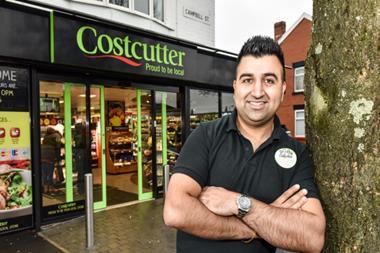Costcutter Supermarkets Group has filed a multi-million pound loss in its annual financial statement as a legacy of its exit from Nisa.
Accounts filed at Companies House for the year to 27 December 2014 show that the group suffered an operating loss of £10.1m which, when combined with exceptional items, amortisation and interest charges yields a total deficit for the year of £20m. Gross margin was more than halved from 2.9% to 1.3% as the group invested in promotions while waiting for suppliers to engage with Buyco, while £10.5m of exceptional costs were incurred to set up Buyco and to support supply partner P&H during the transitional period to the new distribution service.
Turnover was down 1.2% to £766.5m, despite an increase in the net number of member stores, implying high levels of purchasing by members from other sources due to supply problems. The net number of stores served by the group grew by 81 during the financial year, although the group opened 276 new Costcutter accounts and 151 new Mace accounts in the same period, indicating that 346 stores left the group.
In the narrative to the financial statement, Costcutter chief executive Darcy WIllson-Rymer admitted that the transition to the new buy and supply arrangement had impacted on company performance.
“Following the switch over to P&H in July our delivery problems fell well below expectations and took longer than expected to correct. It is encouraging to note improvements in the first quarter of 2015 though we will not rest until the required high levels are achieved consistently and sustainably,” he commented. “We made and continue to make changes to our range promotional packages in response to retailer and consumer needs, recognising that not all changes during the transitional period were executed seamlessly.”
During the year, the group took a 20% stake in Simply Fresh and expanded overseas by opening new Costcutter stores in Cyprus.
“The company is expected to become profitable and cash generative during 2015 and expects to generate sufficient funds in the coming years to repay debt and fund its growth plans,” added Willson-Rymer.





















5 Readers' comments